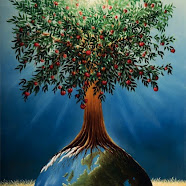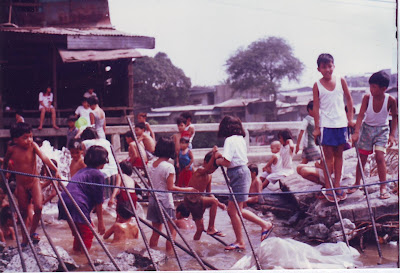The Department of Agriculture came up with a “litany” on the miracles about this tree. Ipil-ipil as a new source of dendrothermal power; ipil-pil for high-protein component feed for poultry, piggery and livestock; ipil-ipil as construction material, scaffolding, pole, furniture, toothpick, matchstick – to name a few.
Ipil-ipil can be used in the manufacture of organic fertilizer to reduce our dependence on imported chemical fertilizer. It is also used for rip-rapping, terracing and strip cropping to save our lands from erosion and desertification. It is an excellent source of firewood and charcoal for many homes.
Ipil-Ipil “Gold Rush”
The ipil-ipil fever spread throughout the country that no home lot or farm was virtually without this leguminous tree. Plantations sprouted. As a biologist I know that there are nitrogen-fixing bacteria (Rhizobia) which reside in its roots, adding to the fertility of the soil. With the tree continuously shedding off its leaves, there is free mulch with which to conserve water and control weeds choking the plants intercropped with the tree. Along levees four to six rows of ipil-ipil could effectively serve as windbreak, buffering strong winds and filtering the sand and dust that affect sensitive field and garden crops.
As Forest Wood Substitute
Because the wood is white, soft, and uniform grained, many entrepreneurs tried making toys and decorations such as fans, spin tops, picture frames, knife handles out of it. Since it is easy and fast to grow, it helps in conserving forest trees. This means we can spare harvesting our forests’ reserve. We can keep our narra, almaciga, apitong, and mahogany that are considered rare. Ipil-ipil is also a good substitute of acacia, a favorite of woodcarvers.
Because of its success as a plantation crop in Hawaii and Peru, we did not only import its technology, we introduced its varieties into the country, in favor of our own native variety which is small. In fact one would consider it a mere shrub which happens to be growing in places where no other plants grow, usually on scrubby and inclined slopes, wasteland where only the sturdy talahib and bamboo grow. The early uses for native ipil-ipil are firewood and bean poles.
On closer look the secret of success of the native variety is its tap root system. Few trees can grow on rock with their penetrating deep through cracks in order to reach deep-seated water. In the process, they pry off the rock itself helping in weathering it. And if it is adobe rock, the locked up nutrients are released as soil formation progresses. One drawback of the native variety however, is its high mimosin content.
Mimosin as Pesticide
“Don’t allow the goats to browse too much on ipil-ipil,” my father used to remind me on the farm. I would then secure the rope that restrains the animals feeding in the open. Years later I found out that the warning is based on the fact that mimosin causes poor growth (bansot) and falling of hairs in animals. I believe that early balding is one of the effects of drinking coffee clandestinely mixed with ipil-ipil seeds.
Initial experiments show that mimosin can be made into pesticide against weeds, insects and pathogenic fungi. It has been also observed that it repels insects such as flies and mosquitoes.
Re-vegetation of Corrigidor Island with Ipil-ipil
Our native ipil-ipil is perhaps the first plant used for rehabilitating wastelands in the countryside. Immediately after the war, sacks of native ipil-ipil seeds were air dropped on Corrigidor island at the onset of the rainy season. The project facilitated the re-vegetation of the war-torn island, and prevented it from further destruction, this time from the ravages of erosion.
What Wiped Out Ipil-ipil?
With the introduction of Hawaiian and Peruvian ipil-ipil varieties, the expected performance level in terms of fast growth, adaptation and yield were achieved. This stimulus caused universal acceptance of the new crop, creating a new field in agriculture: dendrothermal (or firewood) farming.
But the boom was short lived. Nobody knew that the foreign varieties also carried with them a deadly pest – the leafhopper of the genus Psylla of the Family Psyllidae, Order Homoptera, the same group of insects that are the scourge of many agricultural crops, such as the leafhopper, aphids, scale insects and mealybug.
Cause of Widespread Infestation
In biology, natural enemies control a pest. If the enemies are not around, the pest multiplies rapidly. Despite quarantine procedures, the Peruvian and Hawaiian varieties carried the Psylla insect from their port of origin. Unlike in their native countries abroad, this pest while here, lost all natural predators. Thus the insect began to multiply to epidemic proportions. Thousands of trees, and plantations, succumbed to the pest.
This is how the pest attacks. First, it establishes a foothold on the young leaves and shoots, where it builds a colony. Being highly prolific the colony can explode into thousands of insects inside of a few weeks, nurtured in all stages of development by the virtually endless supply of nutrients from the growing tree.
The final blow comes when the insect drains the tree sap dry, stopping the growth of healthy shoots to replace the dying ones. Interestingly the bigger the tree is the more it is prone to attack and eventual starvation.
Homopterans are among the most adaptable of all insects. They are very small, reproduce rapidly and can adopt through seasons through alternate tree hosts. Having studied their unusual reproductive development, I have found that when stressed for food or due to a harsh environment, they can shorten their life cycle to accelerate reproduction. Under extreme conditions they either lay eggs prematurely or directly bear young. Sometimes nymphs can reproduce. Biologists call this phenomenon paedogenesis.
Abandonment of Ipil-ipil Projects
In the late 1970s many farms of ipil-ipil were laid waste by the insect. Owners cut down the trees prematurely. Tree, after tree, was felled not by the ax but by the ravages of the pest. But our own native ipil-ipil stood healthy, a proof of genetic resistance of the indigenous variety.
Abe V. Rotor at 4:35 AM
Share
1 comment:

viJanuary 25, 2012 at 12:24 AM
Wow such an amazing tree. I missed these trees. When I was a child, I used to see them at the park. It gives a perfect shade while jogging in the morning. A friend told me ipil ipil is one ingredient in Thai cuisine














































































